Text
Scientists make breakthrough discovery while experimenting with urine: 'We can reuse a very significant portion of the cobalt'
#news#lol#okay this probably just means urea or something#but it's a hilarious headline#battery technology
10 notes
·
View notes
Text
Me trying to get hired: "Listen, I may be a weird little gremlin. But I'm an EFFECTIVE weird little gremlin."
1 note
·
View note
Text
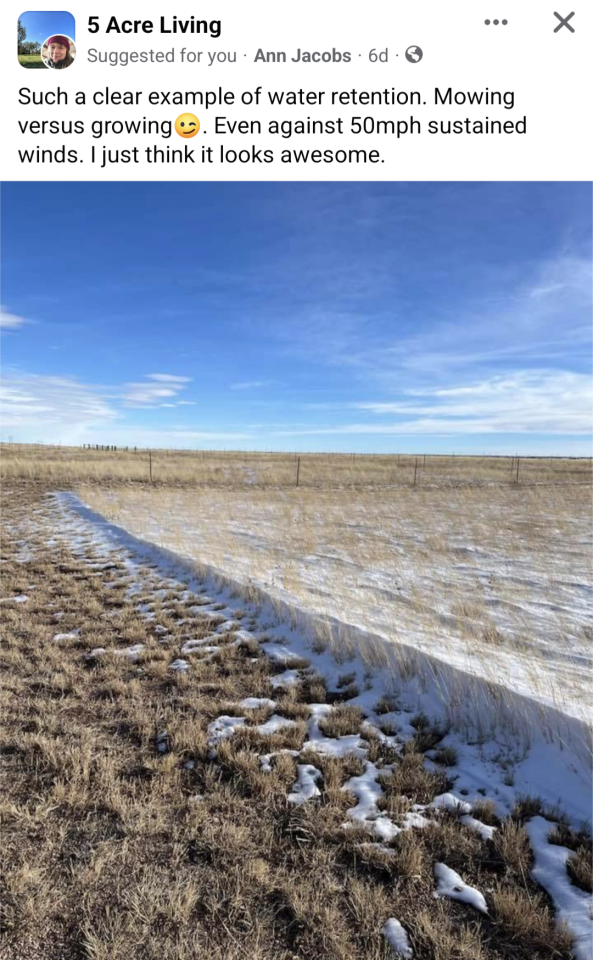
This is actually a really interesting type of water retention that long grass does that I've never thought about before!
You can see how much slower the snow on the long grass is melting, which creates a slower percolation of water into the ground!
It's amazing what a difference vegetation can make for communities that struggle with drought conditions!
#I mean it's going to melt and then go into the ground#but it's sheltering the ground from evaporation until that happens#regenerative agriculture#land use
21K notes
·
View notes
Text
See this?

This is a lithium coin cell. Lithium as in the same element that is in EV batteries and electric bike batteries. They're in toys, electronic candles, key fobs, etc.
Lithium can start fires if mishandled. For god's sake, Tumblr, do NOT run off screaming that your electric candle is going to burn down the house. What I mean is that they SHOULDN'T be thrown in the trash. If they get smashed, they can cause fires in garbage trucks or at the landfill.
You can search for recycling or hazardous materials drop-off near you, or big box stores often have a drop point for batteries.
Plus, recycling lithium is a lot better for the environment than mining it.
#recycling#climate change#batteries#battery technology#I didn't know this until about 2 years ago#so I want to pass the knowledge on#psa
0 notes
Text
Out of curiosity, I tried to figure out how many plants need to be in a room (office, classroom, house, whatever) to allow the CO2 in the air to be naturally converted to O2. The benefit would be that if we didn't need to bring in fresh air from outside for the pesky benefit of being able to breathe, we wouldn't have to use energy to heat or cool that air to a reasonable temperature.
Bad news: it's somewhere between 500 and 800 houseplants, depending on which site is doing the calculation.
#welp#I thought that might help#but nope#back to the drawing board#protect our forests#CO2#plants#houseplants#buildings#trees#climate change#HVAC#IAQ
1 note
·
View note
Text
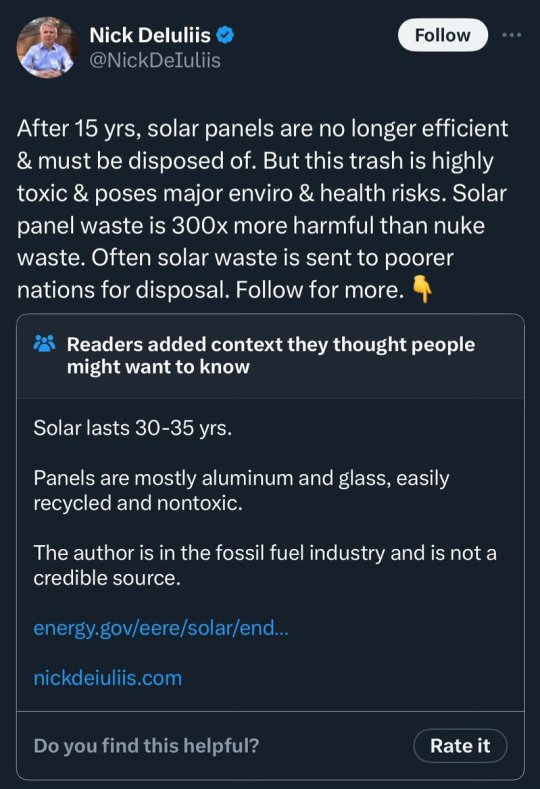
90K notes
·
View notes
Text
The amount of leftists who can't tell the difference between
"You should recycle, but it's not going to stop impeding climate doom"
and
"You shouldn't recycle because it's not your fault the planet is imploding"
is baffling. Like, you're allowed to be mad about greenwashing while still trying to live as sustainably as possible. Buying glassware instead of plasticware isn't gonna stop the planet from falling apart, but it's certainly better than saying "ah fuck it" and supporting the production and landfilling of plastic waste. Even if it's just by a tiny, individual's amount, it's still better than doing nothing. This "all or nothing" mentality that these people claim is tearing apart American politics is quite literally at the heart of their entire belief system.
1K notes
·
View notes
Text
Normalize going to food banks.
49 notes
·
View notes
Text
I went to the local Food Not Bombs this evening and helped set out clothes and serve hot food and drinks. 🙌
#food not bombs#helped one person get a new backpack#helped another find some clothes#got another some blankets#served lots of soup and coffee#etc#it all felt really good#off topic#meirl
0 notes
Text
It’s an open secret in fashion. Unsold inventory goes to the incinerator; excess handbags are slashed so they can’t be resold; perfectly usable products are sent to the landfill to avoid discounts and flash sales. The European Union wants to put an end to these unsustainable practices. On Monday, [December 4, 2023], it banned the destruction of unsold textiles and footwear.
“It is time to end the model of ‘take, make, dispose’ that is so harmful to our planet, our health and our economy,” MEP Alessandra Moretti said in a statement. “Banning the destruction of unsold textiles and footwear will contribute to a shift in the way fast fashion manufacturers produce their goods.”
This comes as part of a broader push to tighten sustainable fashion legislation, with new policies around ecodesign, greenwashing and textile waste phasing in over the next few years. The ban on destroying unsold goods will be among the longer lead times: large businesses have two years to comply, and SMEs have been granted up to six years. It’s not yet clear on whether the ban applies to companies headquartered in the EU, or any that operate there, as well as how this ban might impact regions outside of Europe.
For many, this is a welcome decision that indirectly tackles the controversial topics of overproduction and degrowth. Policymakers may not be directly telling brands to produce less, or placing limits on how many units they can make each year, but they are penalising those overproducing, which is a step in the right direction, says Eco-Age sustainability consultant Philippa Grogan. “This has been a dirty secret of the fashion industry for so long. The ban won’t end overproduction on its own, but hopefully it will compel brands to be better organised, more responsible and less greedy.”
Clarifications to come
There are some kinks to iron out, says Scott Lipinski, CEO of Fashion Council Germany and the European Fashion Alliance (EFA). The EFA is calling on the EU to clarify what it means by both “unsold goods” and “destruction”. Unsold goods, to the EFA, mean they are fit for consumption or sale (excluding counterfeits, samples or prototypes)...
The question of what happens to these unsold goods if they are not destroyed is yet to be answered. “Will they be shipped around the world? Will they be reused as deadstock or shredded and downcycled? Will outlet stores have an abundance of stock to sell?” asks Grogan.
Large companies will also have to disclose how many unsold consumer products they discard each year and why, a rule the EU is hoping will curb overproduction and destruction...
Could this shift supply chains?
For Dio Kurazawa, founder of sustainable fashion consultancy The Bear Scouts, this is an opportunity for brands to increase supply chain agility and wean themselves off the wholesale model so many rely on. “This is the time to get behind innovations like pre-order and on-demand manufacturing,” he says. “It’s a chance for brands to play with AI to understand the future of forecasting. Technology can help brands be more intentional with what they make, so they have less unsold goods in the first place.”
Grogan is equally optimistic about what this could mean for sustainable fashion in general. “It’s great to see that this is more ambitious than the EU’s original proposal and that it specifically calls out textiles. It demonstrates a willingness from policymakers to create a more robust system,” she says. “Banning the destruction of unsold goods might make brands rethink their production models and possibly better forecast their collections.”
One of the outstanding questions is over enforcement. Time and again, brands have used the lack of supply chain transparency in fashion as an excuse for bad behaviour. Part of the challenge with the EU’s new ban will be proving that brands are destroying unsold goods, not to mention how they’re doing it and to what extent, says Kurazawa. “Someone obviously knows what is happening and where, but will the EU?”"
-via British Vogue, December 7, 2023
10K notes
·
View notes
Photo




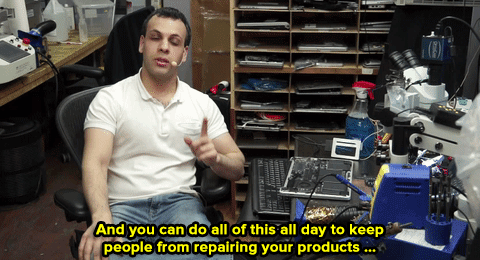


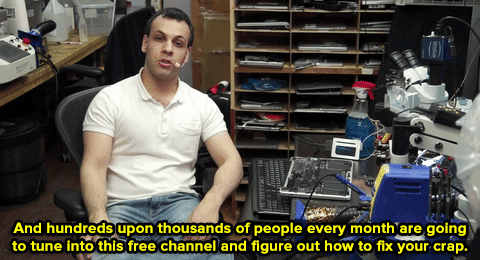
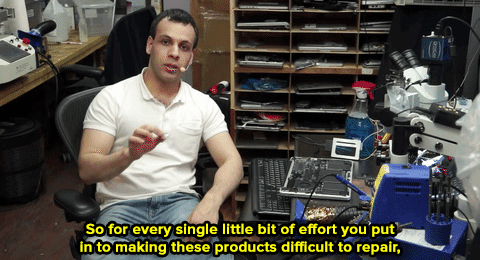
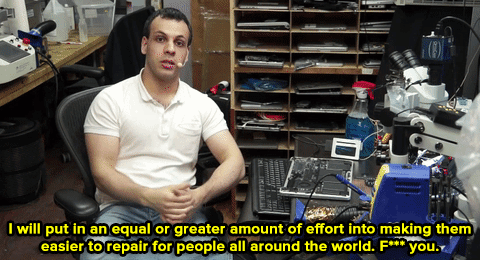
That’s Louis Rossman, a repair technician and YouTuber, who went viral recently for railing against Apple. Apple purposely charges a lot for repairs and you either have to pay up or buy a new device. That’s because Apple withholds necessary tools and information from outside repair shops. And to think, we were just so close to change.
Follow @the-future-now
769K notes
·
View notes
Text
I will write this thought about Veganism and Classism in the USA in another post so as to not derail the other thread:
There are comments in the notes that say meat is only cheaper than plant based foods because of subsidies artificially lowering the price of meat in the United States. This is...part of the story but not all of it.
For my animal agriculture lab we went to a butcher shop and watched the butcher cut up a pig into various cuts of meat. I have had to study quite a bit about the meat industry in that class. This has been the first time I fully realized how strongly the meat on a single animal is divided up by socioeconomic class.
Like yes, meat cumulatively takes more natural resources to create and thus should be more expensive, but once that animal is cut apart, it is divided up between rich and poor based on how good to eat the parts are. I was really shocked at watching this process and seeing just how clean and crisp an indicator of class this is.
Specifically, the types of meat I'm most familiar with are traditionally "waste" parts left over once the desirable parts are gone. For example, beef brisket is the dangly, floppy bit on the front of a cow's neck. Pork spareribs are the part of the ribcage that's barely got anything on it.
And that stuff is a tier above the "meat" that is most of what poor people eat: sausage, hot dogs, bologna, other heavily processed meat products that are essentially made up of all the scraps from the carcass that can't go into the "cuts" of meat. Where my mom comes from in North Carolina, you can buy "livermush" which is a processed meat product made up of a mixture of liver and a bunch of random body parts ground up and congealed together. There's also "head cheese" (made of parts of the pig's head) and pickled pigs' feet and chitlin's (that's made of intestines iirc) and cracklin's (basically crispy fried pig skin) and probably a bunch of stuff i'm forgetting. A lot of traditional Southern cooking uses basically scraps of animal ingredients to stretch across multiple meals, like putting pork fat in beans or saving bacon grease for gravy or the like.
So another dysfunctional thing about our food system, is that instead of people of each socioeconomic class eating a certain number of animals, every individual animal is basically divided up along class lines, with the poorest people eating the scraps no one else will eat (oftentimes heavily processed in a way that makes it incredibly unhealthy).
Even the 70% lean ground beef is made by injecting extra leftover fat back into the ground-up meat because the extra fat is undesirable on the "better" cuts. (Gross!)
I've made, or eaten, many a recipe where the only thing that makes it non-vegan is the chicken broth. Chicken broth, just leftover chicken bones and cartilage rendered and boiled down in water? How much is that "driving demand" for meat, when it's basically a byproduct?
That class really made me twist my brain around about the idea of abstaining from animal products as a way to deprive the industry of profits. Nobody eats "X number of cows, pigs, chickens in a lifetime" because depending on the socioeconomic class, they're eating different parts of the animal, splitting it with someone richer or poorer than they are. If a bunch of people who only ate processed meats anyway abstained, that wouldn't equal "saving" X number of animals, it would just mean the scraps and byproducts from a bunch of people's steaks or pork chops would have something different happen to them.
The other major relevant conclusion I got from that class, was that animal agriculture is so dominant because of monoculture. People think it's animal agriculture vs. plant agriculture (or plants used for human consumption vs. using them to feed livestock), but from capitalism's point of view, feeding animals corn is just another way to use corn to generate profits.
People think we could feed the world by using the grain fed to animals to feed humans, but...the grain fed to animals, is not actually a viable diet for the human population, because it's literally just corn and soybean. Like animal agriculture is used to give some semblance of variety to the consumer's diet in a system that is almost totally dominated by like 3 monocrops.
Do y'all have any idea how much of the American diet is just corn?!?! Corn starch, corn syrup, corn this, corn that, processed into the appearance of variety. And chickens and pigs are just another way to process corn. That's basically why we have them, because they can eat our corn. It's a total disaster.
And it's even worse because almost all the USA's plant foods that aren't the giant industrial monocrops maintained by pesticides and machines, are harvested and cared for by undocumented migrant workers that get abused and mistreated and can't say anything because their boss will tattle on them to ICE.
8K notes
·
View notes
Video
streets with rain gardens and streets without
14K notes
·
View notes
Text
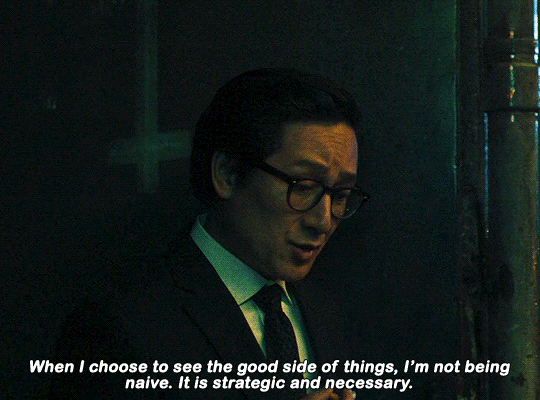

Everything Everywhere All at Once (2022) dir. Daniel Kwan and Daniel Scheinert

14K notes
·
View notes
Text

This one really pissed me off. The school district has an OPEN TOPPED CRATE for collecting recyclables. In the Pacific Northwest.
(Explanation: if paper and cardboard get wet, they aren't going to be accepted for recycling. This is also why you shouldn't put liquids or foods--that includes dirty containers and half drunk beverages--in the recycling. It contaminates a great deal of the other material. Yes, I know some people do anyway. That doesn't mean it's correct.)
Anyway, going to raise a stink about this and see if I can get it swapped out for a proper dumpster with a closing lid.
0 notes
Text
Honest to goodness, I'm feeling so stoked about what I'm managing to kick off at "work." I'm a 100% volunteer position with schools. Well. A school district. A school district that only pays lip service to standing and constantly green washes.
The thing is, there are so many people on the ground who are actually doing something. Parent volunteers. Teachers using time, even unpaid time. NGOs offering resources. Student "green teams" trying to make change.
So I'm coordinating those *other* people this year. Or at least, offering myself up as a coordinator and a conduit for information. I've always found this to be something I'm good at and most people aren't: connecting information and people.
"Breaking down silos", as they used to say.
At the moment I'm visiting different schools and surveying what they have in place already. I'm also asking questions about what they need or what problems they're having. I think it's really easy to feel isolated when you are a single teacher at a single school saying there's a problem. But when someone takes your problems and the same problems from 6 or 10 or 20 other schools and presents them to the district cohesively, my hope Is it will have more impact.
If it doesn't, I'm going harder on Plan B, which is to slowly educate the school board, member by member.
At this point I'm on a first name basis with two of them and a first name basis with two of the candidates for next year 😆 so I feel that's more possible than it might sound.
0 notes
Text
istg my entire usefulness to an organization is often "I make sure everyone gets the needed information and that people talk to each other"
it seems so simple to me, why is this so hard?

#meirl#I'm coordinating around a school district right now#talk about silos#none of these people talk to any of the other people#aiya#sus rambles
1 note
·
View note